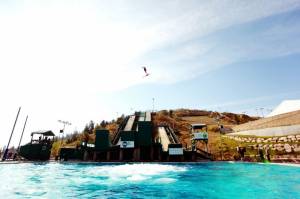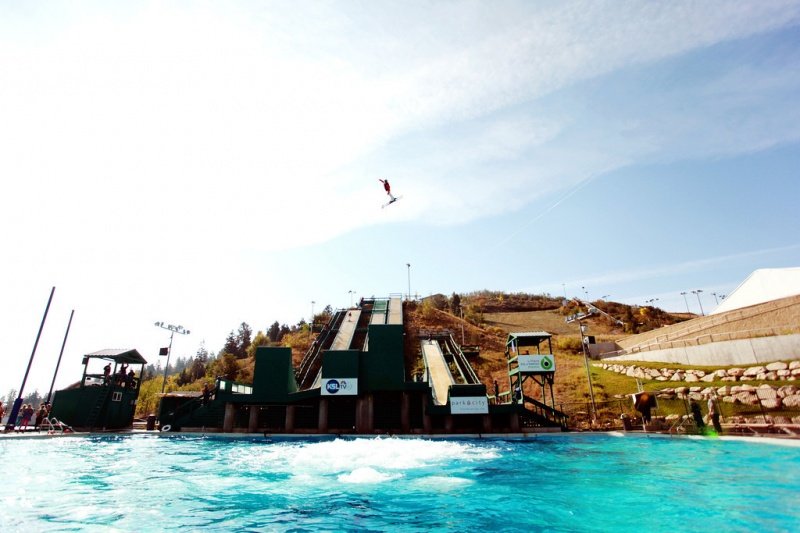Park City, UT – The U.S. Freestyle Team utilized one of their final water camps before the 2013 FIS Freestyle World Cup season to engage high-tech data collection with U.S. Ski and Snowboard Association (USSA) Sports Science staff.
The first to utilize the technology was aerials athlete Mike Rossi, of Long Valley, N.J., who attached a miniature magnetic inertial navigation system to his ski boot. The system tracked the g-forces on his body during the in-run and at landing.

“Having the sports science staff out here supporting us is really huge,” said Rossi. “They’re working hard to keep us safe. With this being a World Championship year, it’s important to look for all possible ways to boost our training.”
By knowing how strong athletes need to be to withstand these kinds of forces, athletes and coaches can focus on technique and better condition the athletes, while decreasing injury rates.
“We have wondered about these questions for years and the technology is finally here to answer them,” said High Performance Director Troy Flanagan. “What better place to find these answers than at a summer water ramp session with support from the entire freestyle program?”
“These last three weeks of water ramping are key,” emphasized U.S. Ski Team Freestyle Program Director, Todd Schirman. “To have the coaching collaboration across both sports is really important before the World Cup season begins. And the support from Sports Science is huge. Everyone benefits from that especially before they take their tricks from water to snow.”
Rossi will do the same test on snow in the next few months in the lead-up to the World Cup season, which kicks off Dec. 15 in Ruka, Finland. Both moguls and aerials will be back in the U.S. for the USANA Lake Placid World Cup in Upstate New York (Jan 17-19) and the Visa Freestyle International at Deer Valley, Utah (Jan. 31 – Feb. 3).

